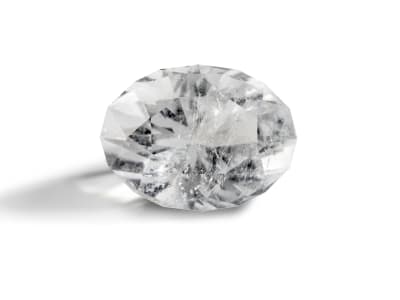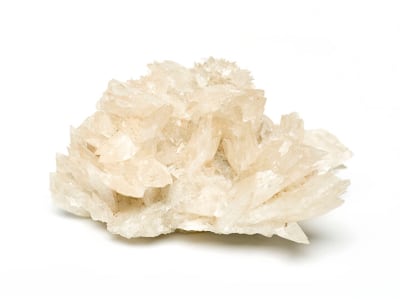A major source of boron, colemanite was discovered in 1884 and named for the owner of the California mine where it was first found, William Tell Coleman. The color of this stone ranges from colorless to white to grey, sometimes yellowish. Specimens are very sensitive to heat. The short, prismatic crystals are often sought after by collectors. Colemanite is rarely seen in the form of gemstones as it presents a challenge to lapidaries because crystals are soft, brittle and have perfect cleavage.
General Information
Common Name
Colemanite
Species
Colemanite
Transparency
Transparent - Translucent
Dispersion
Strength: Weak Fire
Refractive Index
1.586-1.615
Birefringence
0.028- 0.030
Optic Character
Biaxial
Optic Sign
Positive
Polariscope Reaction
Doubly Refractive (DR)
Pleochroism
None
Hardness
4-4.5
Streak
White
Specific Gravity
2.400-2.420
Toughness
Poor
Luster
Vitreous
Fracture
Uneven
Cleavage
Perfect, in one direction
Chemical Name
hydrated calcium borate
Chemical Formula
Ca2B6O11.5H2O
Crystal System
Monoclinic
Chemistry Classification
Borate
Colemanite Colors
-
 Colorless
Colorless -
 Gray
Gray -
 White
White -
 Yellow
Yellow
Countries of Origin
Unknown; United States of America
Care
Requires gentle handling.

